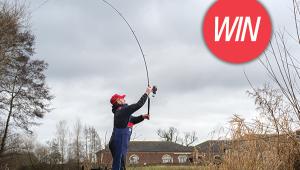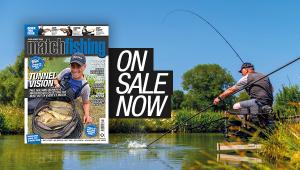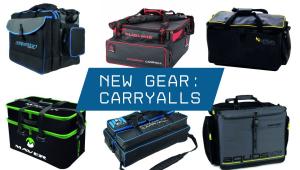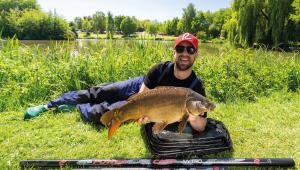Step Up To The Challenge!
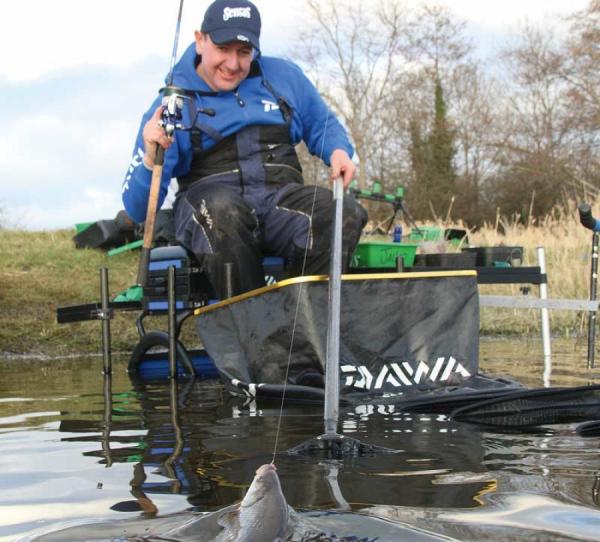
International Match Fishing: Ireland Explored…
Irish feeder international, and two-times World Pairs Champion Phil Jackson demonstrates one of the most demanding but exciting methods of feeder fishing.
If I can’t get a bite when fishing in Ireland, I often put on a heavier hooklength and bigger hook. The fish in Irish waters are the wildest you’ll ever find, and migrate through huge systems of rivers and loughs. They don’t know what a hook or line is, and after a lifetime of fishing for them I’ve learnt that they don’t care either. In fact, the reason for scaling up rather than down is because changing to a bigger, more visible bait will often catch the attention of a fish.
Today, you join me on a lough in County Monaghan, where I want to demonstrate some aggressive feeder fishing tactics that have won me many big events here in Ireland. I’m lucky enough to be a good friend and travelling partner of Cathal Hughes, and fishing positively with strong tackle on the feeder at long range is a tactic we’ve had a lot of success on in the World Pairs events we have won.
Going Long!
The first thing to decide when facing a huge Irish lough is how far out to fish. One thing that you will notice about most Irish venues is that they are very clear. This often leads to the bigger fish backing off into depths where they feel safe. For this reason fishing at long range on the feeder is a very effective tactic.
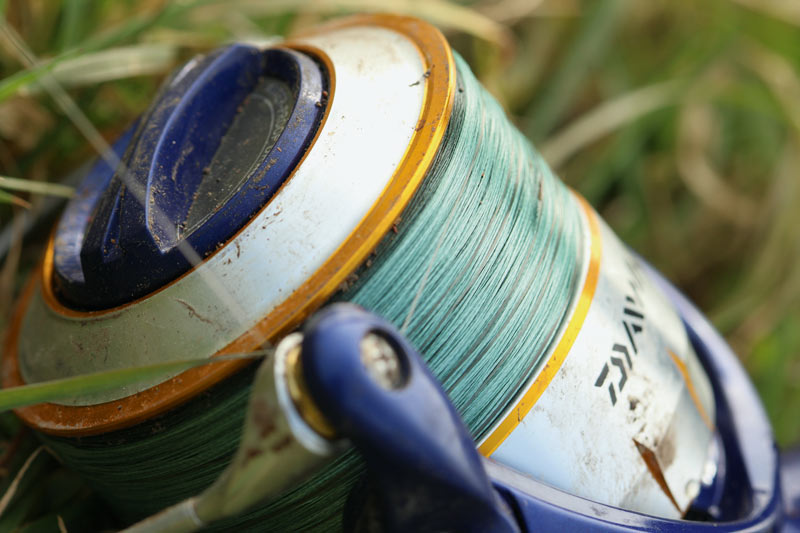
Daiwa TDR reels stand up to the rigours of Irish feeder fishing with braid and heavy feeders
However, anglers are often put off by the thought of using such tactics. I absolutely love it, though, and with just a small amount of the right tackle it really is easy!
Today, we’ve arrived at the lough and it’s flat calm. I haven’t seen a single fish top anywhere, which tells me a long-range attack could be the order of the day. Often, if fish are closer in in the shallower water, you will see them topping there. Today, I’ve clipped up at 60 turns, to begin with.
How To Count Turns
When I use the term ‘clipped up at 60 turns’, I mean that when I cast out and hit the clip, it takes 60 full turns of the handle to wind the feeder back to the rod tip. This is a great way of gauging distance. If you need to setup several rods to fish over the same swim, you can clip them all up at the same number of turns so that you’re fishing in the same place. This is providing that you use the same reel on each rod.
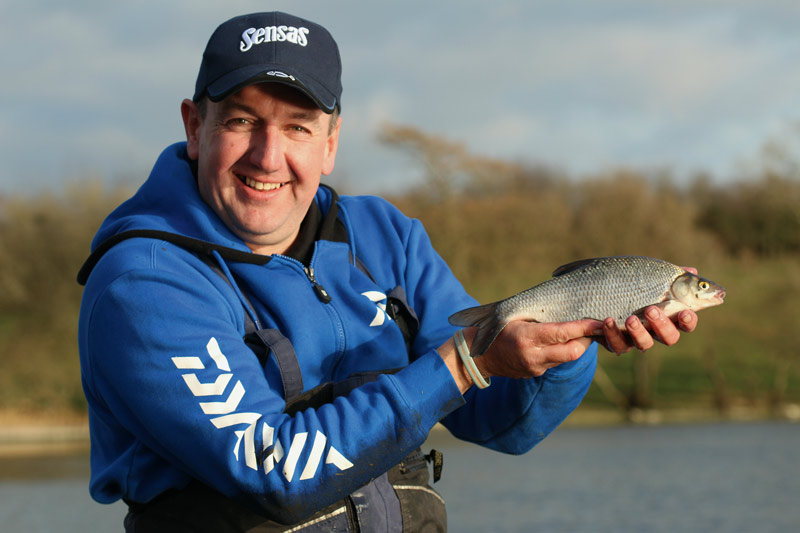
Once hooked a floating maggot sinks slowly and helps fool bigger fish like these hybrids
Rod And Reel Requirements
There is no hiding from the fact that you do need some specialist gear to do this kind of fishing. However, the tackle doesn’t have to be expensive, and it’s available to everyone.
On the rod front, I use 12ft or 13ft heavy feeder rods. My personal choices are Daiwa Tournaments. These are very powerful, and due to the backbone in them, allow me to cast very straight and accurately at long distances. They’re expensive but I do this kind of fishing most weeks, so I’m happy to spend the money on the right rods. Where possible I use the 12ft versions, for fishing in calmer conditions or distances up to 70 turns. Sometimes, however, you have to venture even further, and need that extra leverage to punch out a feeder to distances of 80, 90 and even 100 turns.
On the reel front, I use a Daiwa TDR ???. this gives me amazing amounts of winding power, and I can crank in big, heavy feeders without the reel straining or wearing out.
Braid And Shockleader
You cannot do this sort of fishing without using braid as your reel line. Braid is incredibly thin in diameter, super-strong and has zero stretch. These assets of the material mean that you can cast long distances with it, rely on its strength and durability to cast and wind in heavy feeders and fish, and have ultimate bite detection at long range thanks to zero stretch.
When fishing for species like roach and skimmers, the bites are often rattles and taps on the tip, and you need to pick up and hit them. Braid allows you to do this, but if you were to use mono, you probably wouldn’t even see them in the first place. You don’t need to strike hard – firmly lifting the rod off the rest to the side is enough to hook them.
I always use a shockleader when using braid. This is very important as it offers some stretch and strength when casting, and also when playing fish. When I have my feeder in my left hand and my rod in my right hand, my shockleader runs from my feeder, up to the rod tip, then back down and around the reel four or five turns. This length of line takes all the strain and demands of fishing this method.
The line that I use for the shockleader is 8lb Daiwa Hyper Sensor. To tie it on, I use a loop and a blood knot. I simply tie a small loop in my braid, and then tie the line to this loop using a blood knot, as shown in the diagram.
Sinking The Braid
One of the most difficult things about fishing with braid is that it doesn’t sink very well – it naturally wants to float, especially when it’s new. The braid that I use is nearly two years old and the more you use it, the better it sinks. I like to get the braid wet at the start of a session by launching a bomb into oblivion, and getting it all sunk in the water.
However, your bites often come as the hook bait settles, and when this happens you need to get the braid sunk as soon as possible. I do this by giving the rod a quick tug back and half a turn on the reel at the same time as the feeder is falling. Once the feeder settles, place the rod on the rest and hold the tip under the water, slowly tightening up to this without moving the feeder.
Feeder Choice
I use two kinds of feeder for long-distance work. The first is a cage that is weighted at the base with a weight going all the way around the bottom of the feeder, made by Kevin Leach. I use these when I want to release bait quite quickly, sometimes when the feeder is still falling.
This is a great way of pulling fish into the swim to begin with. Creating a little bit of cloud with particles falling through the water is a great way to draw in fish in these large expanses of water.
When there are hundreds of fish swimming around off the bottom, the chances of them being attracted to a feeder quickly falling to the bottom is slim. However, if you suddenly have a big cloud of feed fizzing in the water column, fish will home in on this from a long way off, following it to the bottom to feed. If you were targeting these venues and fish on a pole, you’d probably feed some soft balls of groundbait to draw in fish to begin with. That’s exactly what I like to try and do on the feeder too.
The other feeders that I use are known as window or bullet feeders. These are very much like a maggot feeder, and have a solid weight at their base. This makes them very aerodynamic, and you can cast long distances with ease. Another advantage to these feeders is that you can fill them full of particles, such as casters, chopped worms and hemp. There are days when the fish really home in on particles, and when the fishing is good you can hold them in the swim better by using these feeders filled with particle baits.
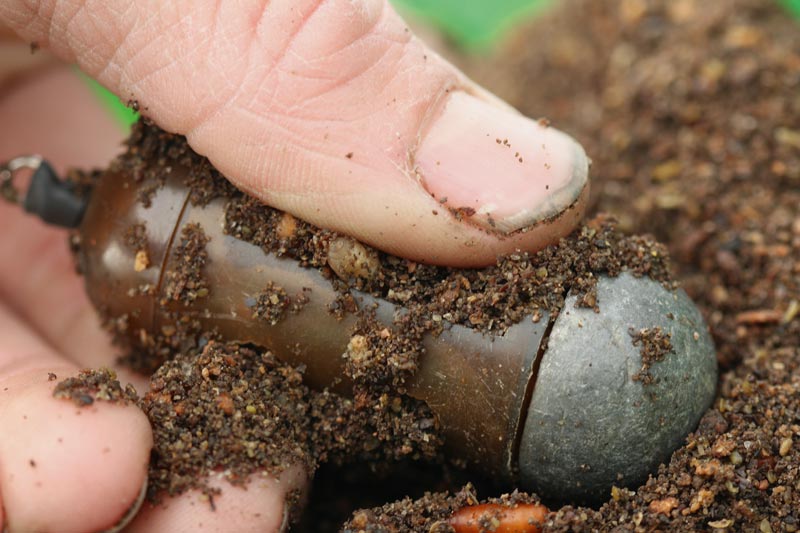
Window feeders allow you to cram in lots of particles with just a tiny plug of groundbait
To keep the particles in them, you simply plug the little window opening with some groundbait.
Casting Techniques
Adopting the right casting techniques is vital when fishing long distances on the feeder. You can have all the right gear, but without the correct technique you won’t be able to hit the spot.
It’s worth saying at this point that I am right-handed. The first thing that I do is pick a far-bank marker. Today I’m choosing a tree on the shoreline opposite. I always stand up to cast, and leave a drop between the rod tip and feeder of around 1.25 metres.
The key to hitting distance is to compress the rod as much as you can, giving it maximum elastic energy at the point the feeder is released. This is transformed into kinetic energy when you release the feeder, powerfully and smoothly punching it out.
Jacko’s Casting Steps:
Always stand up when casting long distances.
Make sure you have a drop between the rod tip and feeder of around 1.25 metres.
Hold the rod and reel in your right hand, and push this out away from you towards the lake.
You can now grab the bottom of the butt of the rod with your left hand.
Lift the rod and smoothly bring the feeder behind you – it’s vital this is a smooth movement.
As the feeder comes behind you, you’ll feel the weight of it tighten up on the rod as it drops behind.
At this point, you need to get a feel of when the feeder is nearly at the maximum point behind you. When you feel this push the feeder smoothly but powerfully forward with your right arm, and pull down hard on the rod butt with the left. All the time you’re doing this you need to be looking at and aiming for your marker.
You need to work out the right point of release to let go of the line. Ideally you need the perfect amount of power and height so that the feeder firmly hits the clip and lands with everything very tight to the rod.
To help keep everything tight, I always cast with much more power than I need, and then lift the rod up and over my left shoulder. The feeder will hit the clip at this point, and almost pull the rod forward, cushioning the feeder into the water, with everything as tight as possible.
This prevents a big bow developing, especially on windy days. You can then get the braid sunk as quickly as possible.
Accuracy Tip!
When you bring the feeder behind you to cast, make sure you keep looking at your marker, and don’t glance away to look behind you. This will keep you on target.
Jacko’s Feeder Rigs
I always set up two feeder rigs when fishing at distance. One is a fixed paternoster, and the other is a free-running paternoster. I don’t think that any rig gets you any more bites, but on certain days you seem to hit more bites on certain rigs. I really haven’t got a clue why, but today has been a typical example of this.
When I started getting bites I was using the fixed rig, and I was missing one in every three or four. However, switching to my free-running rig, I started to hit nearly every one. It’s a bit of a mystery, but the lesson that I’ve learnt is to always have both assembled.
The Session
I feared the worst this morning, with calm conditions after a cold night. Starting the session fishing at 60 turns, I went a whole hour without a single bite. Despite trying all the little tricks in the book, I simply couldn’t get a bite.
My next port of call was to venture even further out. Picking up my 13ft rod, I removed the clip at 60 turns, and cast around 15 metres further, before clipping up there. Counting the turns back, it was 74 turns. I decided to have three quick casts here with a large 40g cage, and gave the rod and reel a quick pump and wind after the feeder had been sinking for six seconds. It took around a count of 12 for it to hit the bottom, so by twitching it here I would release the bait from the feeder well off the bottom to hopefully draw in some fish.
Switching to a bullet window feeder with just a few casters plugged with groundbait, and two floating red maggots on the hook, I got a fast dig on the tip. Firmly picking up I was into the first fish! It just goes to show that even when fishing a distance, going further out can make a difference. The first fish, a roach around 8oz, soon came to the net.
I soon settled into a great run of these fish, with some Irish hybrids also making an appearance. Most of the bites came as the hook bait was settling, and baiting up with two floating maggots definitely helped. These sink slowly with the weight of the hook, maximising the chances of a fish taking the bait at this vital stage.
Twitcher!
A great way of enticing bites on the feeder is to actually move the feeder and hook bait. Where the feeder lands on the bottom, most of the bait will be released in a small pile. If you don’t get a bite as the bait settles, twitch the feeder back around two to three feet, so that your hook bait is coming back into this pile of feed. Often, a fish will grab the hook bait as it’s moving and virtually hook themselves, so be ready to pick up and wind them in!
I’ve ended today’s session with around 20lb of roach and hybrids in just a couple of hours. It took a while to get the first bite, and I had to venture out even further than where I first started. However, with the right kit and a few little tricks up my sleeve, I’ve ended up with a lovely net of fish on one of my favourite methods.
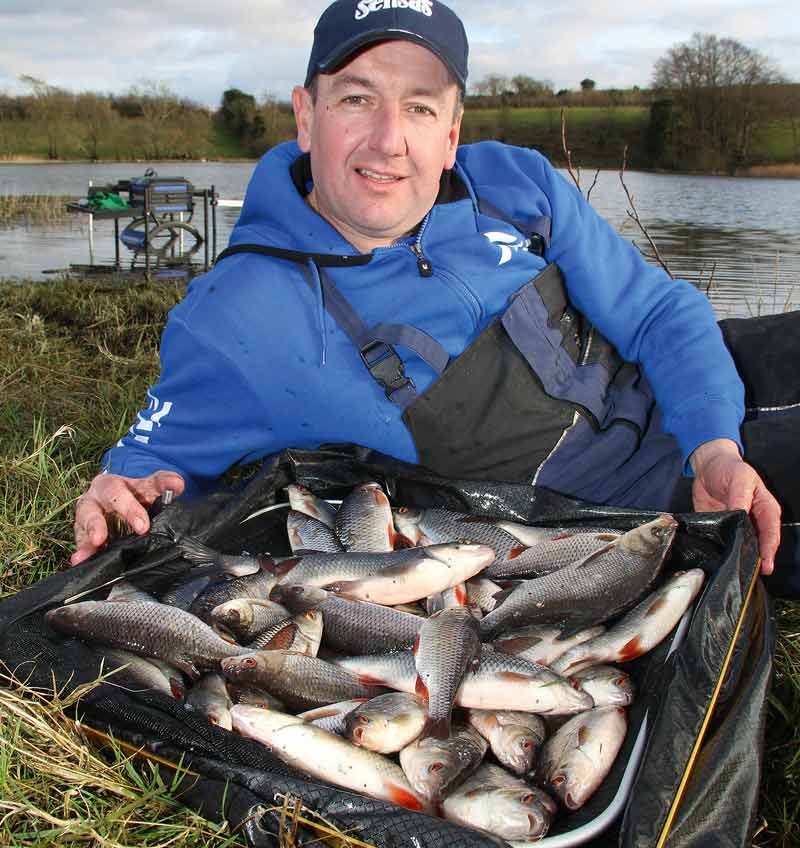
Don’t let a long-distance feeder attack scare you - match-winning rewards are there for the taking!
Like what you see?
Or buy a single issue
- Log in or register to post comments



